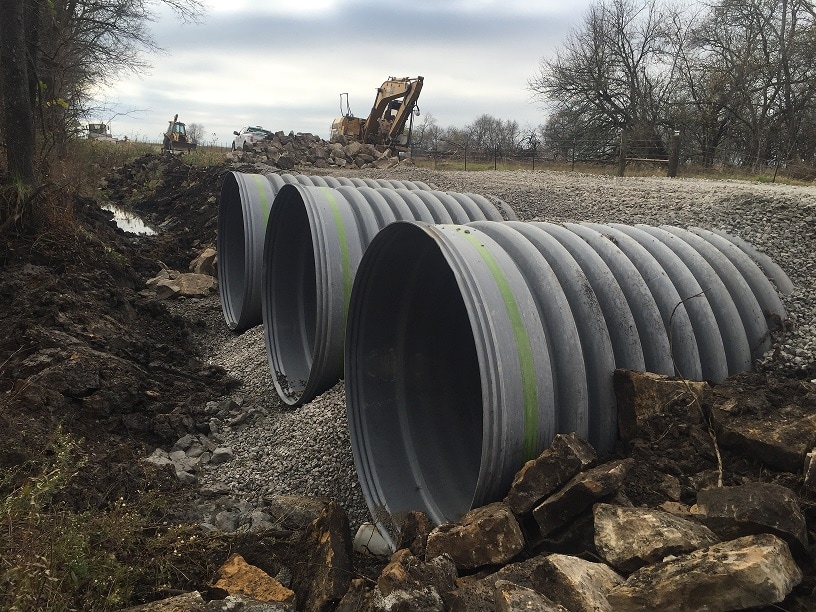Accomplish Success With Culvert Setup: Best Practices Revealed
Setting up culverts is an essential element of infrastructure advancement, requiring precision and adherence to best techniques for long-lasting success. Whether undertaking a brand-new job or preserving existing culverts, the procedure demands meticulous attention to detail. From the initial product choice to the lasts of upkeep, each action plays a vital role in the capability and longevity of the culvert system. In this discussion, we will certainly check out vital strategies, suggestions, and standards that can dramatically influence the result of culvert installments. Understanding these crucial factors is extremely important in making sure the architectural integrity and performance of culverts, making it important for specialists and enthusiasts alike to realize these fundamental concepts.
Proper Product Choice

Concrete culverts are known for their strength and durability, making them appropriate for hefty website traffic areas and huge water circulation quantities. Corrugated metal culverts are lightweight and simple to mount, optimal for temporary applications or circumstances needing a fast option. Plastic culverts are light-weight, corrosion-resistant, and cost-efficient, making them a prominent option for various culvert installations. Composite products offer a mix of buildings from different products, giving an adjustable solution for certain job needs. Ultimately, choosing the proper product is vital to guarantee the culvert system operates effectively and has a long solution life.
Site Preparation Tips
Efficient site preparation is crucial for the effective setup of culverts, ensuring correct assimilation with the surrounding environment and long-lasting capability. Before beginning the installment procedure, it is critical to conduct an extensive site analysis to identify the suitable size, type, and placement of the culvert.
Following, the soil conditions must be evaluated to evaluate the stability and load-bearing ability of the ground. Relying on the soil kind, extra actions such as compaction or reinforcement may be essential to avoid resolving or shifting of the culvert in time. Correct drainage considerations need to likewise be thought about to prevent water build-up around the culvert, which can cause erosion or structural damage.
Last but not least, establishing correct accessibility to the website for construction tools and making certain conformity with any kind of regulatory demands are crucial facets of site prep work. By following these site prep work pointers, the setup of culverts can be performed effectively and efficiently, promoting the long life and capability of the culvert system.
Installment Methods

To start with, it is vital to accurately gauge and mark the place where the culvert will certainly be set up. This makes certain appropriate alignment and avoids any mistakes throughout the installment stage. Excavation needs to be done thoroughly to create a steady structure for the culvert. The trench must be dug to the correct deepness and width, thinking about the size and kind of culvert being installed.
Next, the culvert must be put in the trench adhering to the producer's standards. Proper positioning is essential for the capability and durability of the culvert. Backfilling the trench with the appropriate material and compacting it in layers is the final step in the installation procedure. This ensures the culvert is securely in position and ready to hold up against the needs it will certainly face. By adhering to these installation methods carefully, the culvert will be efficiently mounted, contributing to the total success of the job.
Upkeep Standards
After finishing the mindful installation of culverts adhering to proper strategies, adherence to maintenance guidelines is extremely important to guarantee their longevity and performance. Regular evaluation is important to identify any type of indications of anchor wear, blockages, or architectural damage early. Evaluations need to include looking for sediment buildup, erosion around the culvert edges, and any type of indications of deterioration or corrosion. Clearing up debris, such as branches or leaves, from the inlet and outlet regularly is essential to prevent blockages that might result in flooding.
Furthermore, keeping appropriate slope and placement of the culvert is crucial for reliable water circulation and to avoid potential blocking. Road construction. Any type of plants near the culvert need to be handled to prevent root invasion and clogs. In areas prone to freezing temperature levels, implementing winter months maintenance practices such as guaranteeing proper drainage to stop ice build-up is important
Regular upkeep not only prolongs the life expectancy of culverts but also guarantees they operate properly in taking care of water circulation, decreasing the danger of damage to infrastructure and surrounding locations.
Troubleshooting Common Issues
Attending to typical problems that might develop with culverts requires an organized approach and cautious evaluation of the underlying causes. One frequent trouble run into is blockages within the culvert, often triggered by particles accumulation or sediment accumulation. To fix this problem, normal examinations and upkeep are necessary to make sure correct performance. Furthermore, inappropriate installment leading to misalignment or insufficient incline can lead to water flow disturbances or perhaps architectural damage. By evaluating the culvert alignment and slope on a regular basis, prospective problems can be identified and corrected without delay.

Conclusion
Finally, achieving success with culvert installment requires mindful consideration of material selection, comprehensive website preparation, appropriate installation techniques, and normal upkeep. By following ideal techniques and fixing usual concerns, the stability and performance of culverts can be made certain. It is vital to stick to standards and suggestions to protect against any kind go of potential problems and ensure the longevity of the culvert system.